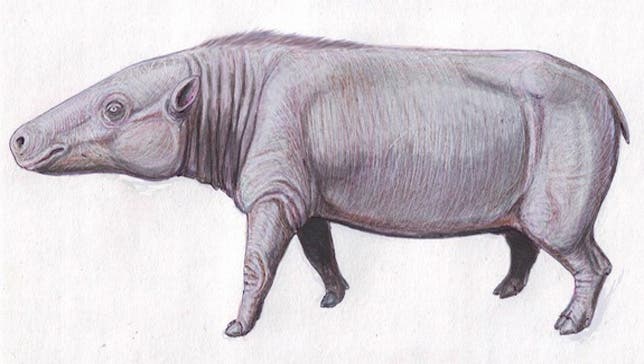Paleontologists have excavated and analyzed the remains of an ancient hypo ancestor in Kenya. The 28 million-year-old fossils paint a broader picture revealing the missing link between modern day hippos and the earliest ancestor who lived some 53 million years ago. As an interesting tidbit, the closest living relatives of the hippo are whales and dolphins, as revealed by previous genetic analysis.

Many scientists believed the ancestor to hippos came from a family of extinct, semi-aquatic mammals, the anthrocotheres, which first emerged about 40 million years ago. These beast are thought to have roamed Africa and Asia, but a hippo ancestor was never found. This all changed after Fabrice Lihoreau, a paleontologist at the University of Montpellier in France, found an intriguing jaw from an anthrocothere while shifting through fossil records at the Nairobi Museum in Kenya . The jaw was tracked down to the Turkana Basin, a region of Kenya famous for fossils from the Cretaceous Period to the present day, including those of ancient Homo erectus and Neanderthals. Near the area where the fossil was uncovered, previous explorations returned with fossils of crocodiles and other aquatic animals from about 28 million years ago. Lihoreau was intrigued and soon found himself in the Turkana Basin, eventually reaching a place called Lokone Hill. Here, where the rock was softer, the researchers several teeth from a new anthrocothere species, including molars and incisors.
Of all small fossils, dental fragments are likely the most useful since a lot of information can be inferred simply by studying patterns and shapes. Similar to teeth in modern-day hippos, the molars showed a distinctive three-leaf pattern that looks a bit like a maple leaf. This means that the new species, which they named Epirigenys lokonensis, was a direct ancestor of modern day hippos. According to the analysis, this hippo forefather migrated from Asia to Africa about 35 million years ago. In that time, Africa was an island, surrounded by water. This makes Epirigenys lokonensis and earlier relatives some of the first big mammals that colonized Africa.
“When you do a safari, you want to see a lion and you want to see an antelope, but these animals come from Asia ” Lihoreau said. “They are not really African mammals. This is really an African mammal.”
If the average modern hippo can weigh up to two tonnes, the same can’t be said about its 35 million-year-old ancestor. Lihoreau said it can be compared to an overgrown sheep in size. “They are slender hippos, very thin hippos,” he said. Findings appeared in the journal Nature Communications.






